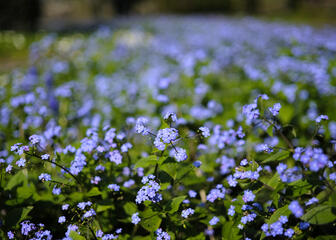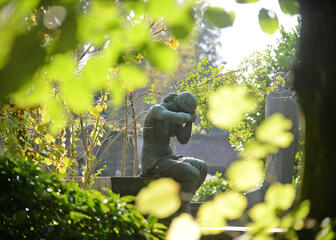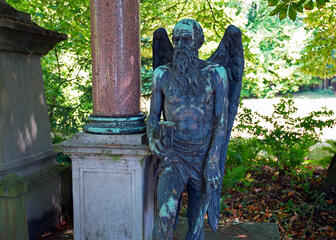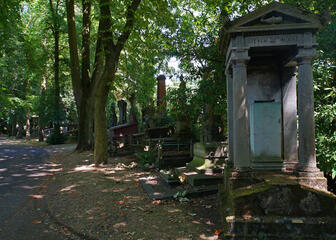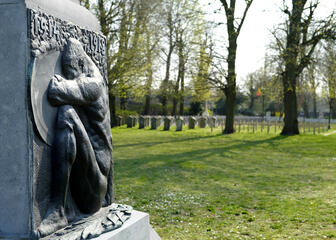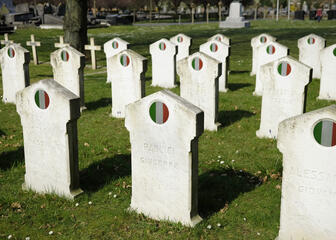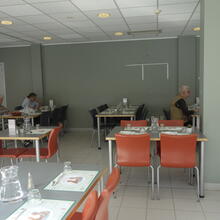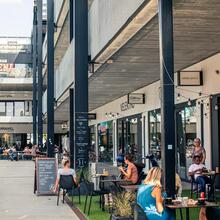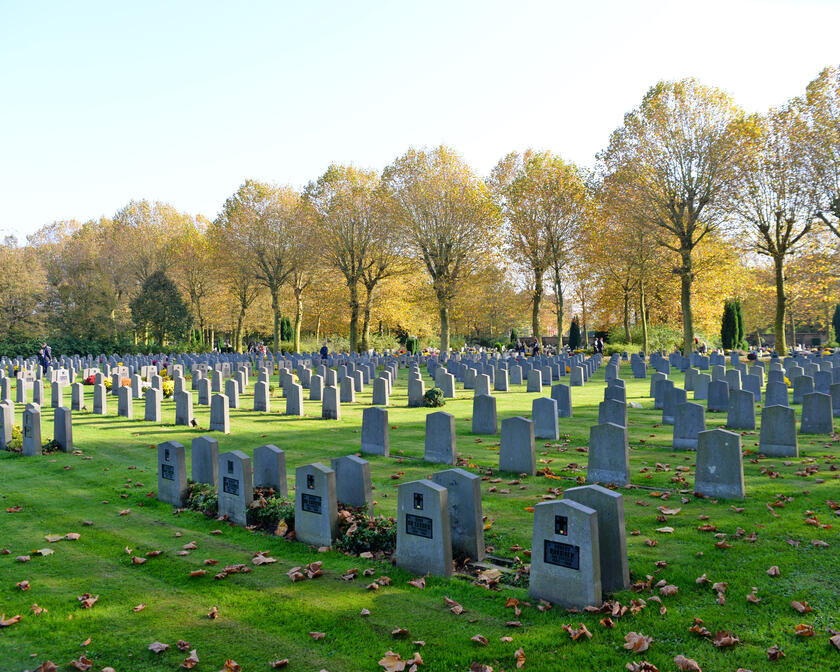
Unknown, unloved
Located on a 19-metre-high hill, Campo Santo is of course Ghent's most famous cemetery. One sometimes seems to forget that the western cemetery is many times bigger and also gives some resounding names a last resting place. One can think of Cyriel Buysse, the Flemish writer of among others “Het gezin van Pamel” and Virginie Loveling, a poet whose name lives on in the government building next to St. Peter's Station. The western cemetery also contains a military cemetery where some 200 Flemish and 195 British soldiers rest. All victims of the First World War.
Of religions there is nothing to be disputed
In 1862, Charles de Kerckhove de Denterghem, then mayor of Ghent, conceived the plan to no longer exclusively reserve this cemetery for Christians. From then on Jews and Protestants were also welcome after they had breathed their last. As the diocese strongly criticized this decision, the western cemetery then got its nickname "Geuzenkerkhof". “Geus” is a degenerated form of the original French word “gueux” meaning beggar. This word had its origin in the Eighty Years' War when it was used as a swear word for Protestants and by extension for everything that was not Catholic.
Totally zen
More than half of this 23 hectares of land is green, which makes it ideal for a long walk. The western cemetery was laid out in the English landscape style. In other words, a drift with beeches on both sides leads to the impressive entrance gate. Through the lawns are winding footpaths where the British bourgeoisie liked to stroll. The City of Ghent provides three walking routes (only in dutch) through this park, each with a different target audience.
Opening hours
The cemetry is only accessible by car to undertakers, contractors, workers and holders of a parking card for people with disabilities. Permission needs to be requested by sending an e-mail to groendienst@stad.gent



